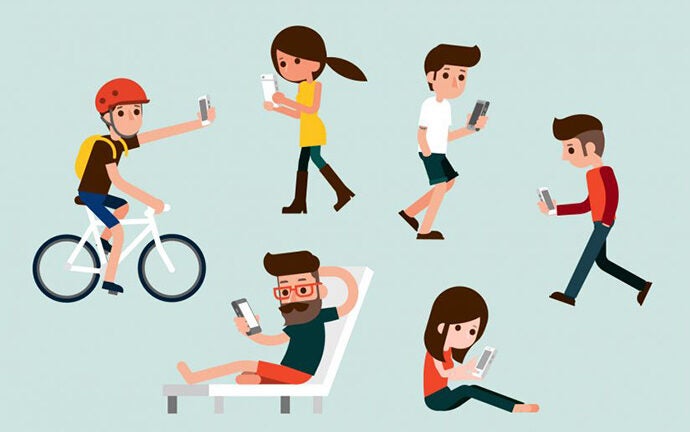
Happy 10th birthday, iPhone: You’ve changed the world in addictive ways
Apple released its first iPhone on June 29, 2007, forever changing how people interact with each other and the world. A decade later, smartphones are seemingly welded into our hands, often leaving people feeling vulnerable if they forget the device at home. Here, USC Dornsife researchers discuss the pros and cons of how smartphones have transformed our daily lives.
Swiping right on Tinder activates the ‘pleasure center’ in your brain
Swiping on apps is inherently rewarding due to a dopamine hit in the brain every time a new message is received, explained Julie Albright, who lectures on psychology at USC Dornsife. Moreover, she said, the affected area is the same ‘pleasure center’ that is activated by cocaine and other addictive drugs.
“The addictive qualities of swiping on dating apps like Tinder has important implications for relationships: These dating apps serve as an omnipresent ‘other’ that potentially undermines relationships by providing a seemingly limitless array of attractive others for romantic or sexual dalliances,” Albright said. “As such, it can serve to undermine one’s willingness to commit to or sustain a monogamous relationship due to the ever-present element of choice.”
This is your brain on internet use
Antoine Bechara, professor of psychology at USC Dornsife, says internet addiction has some behavioral similarities to hard drug use.
“There is a relationship between how addicted someone is to social media and how strong or how different the brain signals are in specific regions,” he said. “The similarities between internet addiction and cocaine addiction really lie in those brain systems that drive you toward the reward, including release of the reward and pleasure neurotransmitter dopamine.”
However, Bechara notes, there are fundamental differences, too.
“Cocaine use usually involves impairments in the prefrontal cortex, which leads to poor decision-making across many facets of life,” he said. “But internet addiction usually does not involve prefrontal cortex impairments.”
Data collected from mobile phones can improve health
“Some people say kids and teens overuse their smartphones, but with an object that is so new, it’s difficult to set a limit to proper use,” said Donna Spruijt-Metz, professor (research) of psychology and director of the USC mHealth (Mobile Health) Collaboratory at USC Dornsife’s Center for Economic and Social Research.
Moreover, she added, it’s not easy to control screen time because children and adolescents use screens, including smartphones, to access information for homework.
“Of course, they also use smartphones to access games and social media, which definitely has had some harmful effects, including an influx of cyberbullying,” said Spruijt-Metz, who holds a joint appointment at the Keck School of Medicine of USC.
“Yet mobile phones can be harnessed for good in real time and in appropriate situations,” she argued. “Our research uses smartphone-derived data to develop interventions — tips, push alerts and information — that can help children and families.”